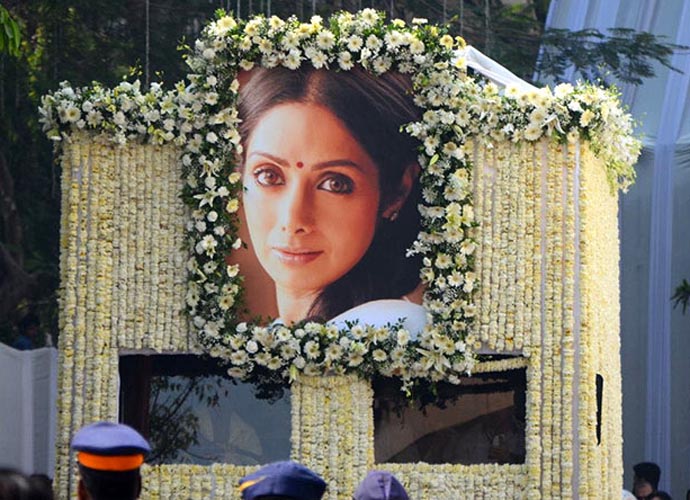Who is responsible for 'news ki maut'?

In September 1995, a bizarre news story made headlines. The idol of lord Ganesha was apparently drinking milk, and the entire country was talking about it. The media had particularly gone berserk.
While most journalists sought comments from politicians or scientists, Surendra Pratap Singh, who used to edit and anchor “Aaj Tak” - a news bulletin on Doordarshan that later culminated into a news channel - sent his reporter to a cobbler. He simplified the capillary action and explained it beautifully to the viewers.
As I watched, or rather read about, the crass media coverage of Sridevi’s death, I missed my friend SP Singh, more than ever. Unfortunately, SP passed away prematurely. News channels, including the one he founded, would have been better off with his perspective that was so palpably missing. Because that's the purpose an editor is supposed to serve - to put developments in perspective, irrespective of the TRPs.
In the quest to “break news”, channels did not follow any of the basic rules of cross-verification. And what followed after that was sheer black comedy. Deep discussions ranging from whether an excellent dancer could fall in a bathtub to whether India has a “bathtub culture” with images of drowning Sridevi with Boney Kapoor watching along to enhance our experience. A South Indian reporter went a step further and literally entered a bathtub, leaving behind all the English and Hindi channels.

Amid the madness, how could BJP MP Subramanian Swamy keep mum? He demanded an inquiry between Dawood Ibrahim and the Hindi film industry, suggesting foul play. Like a postman, ANI passed it on to news channels without countering him, and the news channels carried it.
I am neither shocked nor surprised. Private news channels have been on the rise since 2000. And incidents like Sridevi's would be found in abundance if we peep into the recent history of these channels. Take the example of little Prince who fell into a well, or even the Aarushi murder case.
A few weeks back when the news media was consumed with Padmaavat, some of the reporters had donned Padmavati's costume to present news. Why should this be called "journalism" is a million-dollar question.
When commentators or media critics point out the nonsense disguised as journalism, an easy excuse of TRP is thrown back at the critics. While the viewers, to whom I will come later in the piece, are responsible for abetting the sorry state of journalism, the primary responsibility lies with the editors.
Journalism cannot always be viewer-driven. There is no denying the viewership generates revenues and is essential for the sustenance of channels, but not at the cost of journalistic integrity.
If the owners insist on TRP-driven programmes, shouldn't the editors stand up to them? Why cannot they have faith in themselves to engage the viewers with good content?
I headed a news channel for seven years, which was watched and embraced by the state of Maharashtra. Not once the management knocked on my doors to pressurise me for TRP-driven programmes because we provided content. I sent my reporters to the field, instead of bathtubs. Editors today have become lazy. They do not want to work hard for numbers. But in the conquest of cheap success, they have sacrificed good journalism. They have reduced journalism to a platform for cheap entertainment.
The most unfortunate part is it is not happening out of lack of skill, but lack of conscience. When you head a TV channel, you have a certain responsibility towards the society. And when people in positions of power start selling their souls, it seeps into the society as well.
Indian journalism has rich history right from the time of The Bengal Gazette inspired Raja Ram Mohan Roy. The legacy continued through the freedom struggle and thereafter as well. But in the last decades or so, the entire legacy has been shredded into pieces. There is nothing wrong in aspiring to be the most-viewed channel. But as I said earlier, it cannot be achieved through shortcuts.
Simply echoing the “public sentiment” is not journalism. And the guests participating in it, validate and legitimise the circus.
Which brings me to the viewers, who are as culpable here. I was in Mumbai and Nasik the day after Sridevi passed away. Not a single household I stepped into had anything other than Sridevi on their TVs. The channels discussing it insensitively and the viewers watching it with equal voyeurism.
It is a fact that the channels feasting on Sridevi's death are the ones that are most watched. Viewers enable editors to be mediocre, and vice versa. We have been caught in a vicious circle.
The question is, how long will this blame game continue? Will the viewers stop watching these channels? Will the editors think of journalism first and TRPs later? The need to look inwards is starker than ever, because it wasn’t just Sridevi's funeral that took place on Wednesday.
Journalist Barkha Dutt aptly came up with the hashtag “News Ki Maut”. And all of us provided a shoulder to it.

